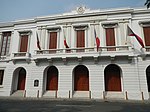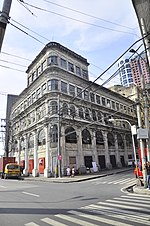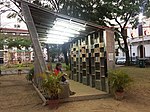Plaza Mexico (Manila)
Plaza Mexico is a historic riverside square in Manila, Philippines, located at the west end of Magallanes Drive and Riverside Drive in Intramuros bordering the Pasig River in the north. It is surrounded by the Aduana Building on the south, the Bureau of Immigration Building on the east and the ruins of the Bastión de Maestranza and Puerta de Almacenes on the west. The Pasig River Ferry has a station also named Plaza Mexico located northeast of the square behind the Immigration building. The square was named Plaza Mexico in 1964 to commemorate the 4th centenary of the expedition of Miguel López de Legazpi and Andres de Urdaneta from New Spain (Mexico) and the historic Manila-Acapulco galleon trade relations between the two nations that lasted 250 years. Located on this square is the monument to the IV Centenary of the Mexico–Philippines Maritime Expedition donated by the Mexican Secretary of The Navy Shipyards during the celebrations of the Year of Mexican-Philippine Friendship in 1964. On the other side of the square is a statue of Adolfo López Mateos, the President of Mexico who visited the city in 1962.
Excerpt from the Wikipedia article Plaza Mexico (Manila) (License: CC BY-SA 3.0, Authors).Plaza Mexico (Manila)
Muralla Street, Manila
Geographical coordinates (GPS) Address Nearby Places Show on map
Geographical coordinates (GPS)
| Latitude | Longitude |
|---|---|
| N 14.594166666667 ° | E 120.97444444444 ° |
Address
Intendencia (Aduana Building)
Muralla Street
1002 Manila (Fifth District)
Philippines
Open on Google Maps










